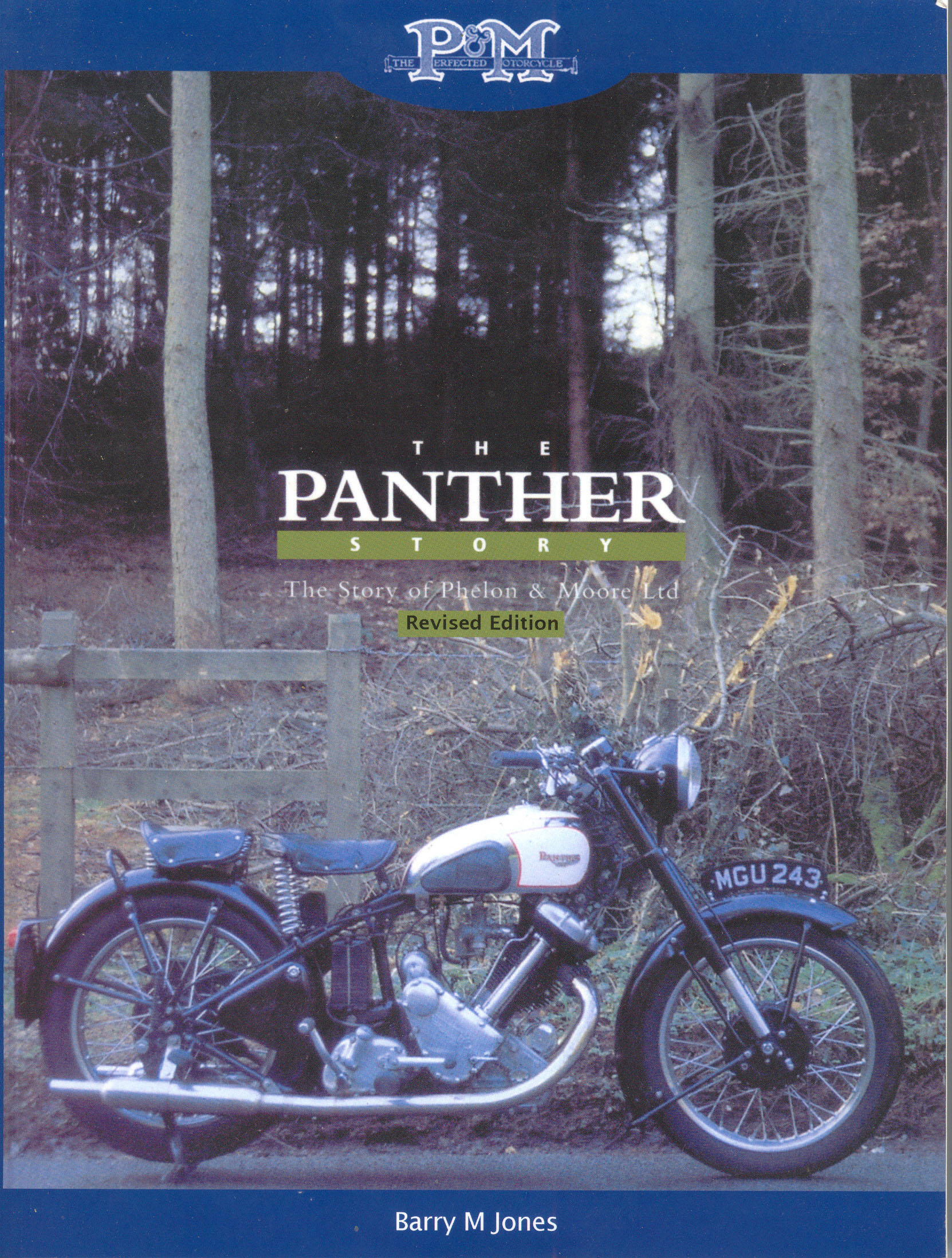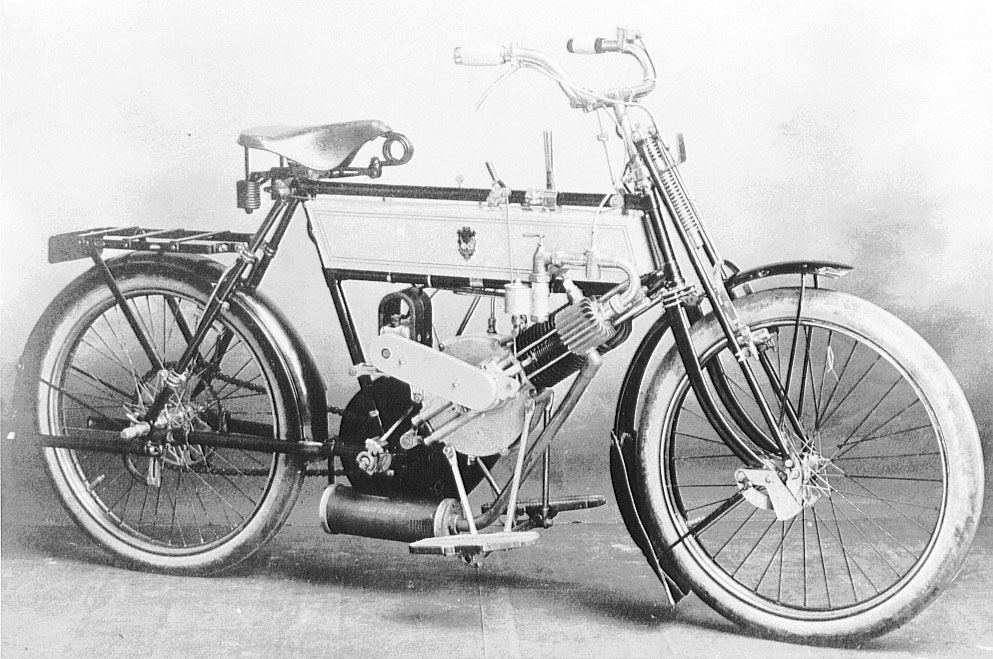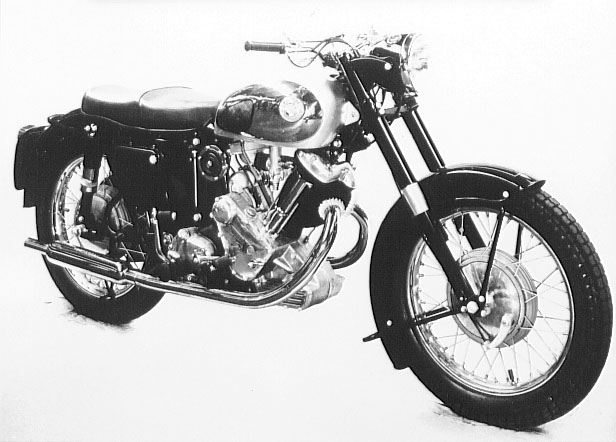The Panther story
Joah Phelon had a small wire-drawing die business, associated with the local Yorkshire wool industry, in partnership with his nephew, Harry Rayner. Though a keen cyclist, Joah soon experimented with motor-assistance replacing the front down tube with an encased engine but unlike other pioneering motor-assisted bicycles, used all-chain drive. It was a sensation and soon caught the attention of Humber who from 1901 license built the Phelon & Rayner design as a motorcycle, tricycle and forecar later adding a water-cooled engine and a 2-speed gear train. This allowed Joah to return to his core business… and there the story may well have ended were it not for a young engineer and keen P&R rider, Richard Moore.
Richard developed a unique expanding wedge-clutch 2-speed all-chain drive, transforming the P&R into a truly successful motorcycle. Their new Phelon & Moore of late 1904 was a sensation and was soon regularly winning Gold awards in motorcycle trials and winning many firm friends, especially in sidecar work with its immensely strong engine-cum-frame design.
The 3-1/2hp P&M was adopted exclusively by the Royal Flying Corps and Royal Naval Air Service in WW.I; its in-service durability added to is appeal post-war. The P&M remained the standard RAF motorcycle until 1928 when military procurement passed to the army.
The 1920s saw many improvements. Upgraded to 4-1/2hp the war-time V-twin 6hp side-car hauling prototype was now abandoned; a 4-speed gear system was added and in 1923 an ambitious move into sports tourers came with the new ‘Panther’ side-valve – it too found many friends in sporting events, but P&M’s mainstay remained with top of the range tourers and sidecar machines.
In 1923 P&M thought the unthinkable; a new motorcycle. The ‘clean sheet’ approach was entrusted to Granville Bradshaw who had earlier designed the transverse-twin ABC. He unhesitatingly retained the robust engine-cum-frame design and merely developed an over-head-valve version of the reliable 4-1/2hp sv engine. P&M were soon offering a range of models from heavyweight sidecar mounts to sleek TT racers!
In 1927 P&M reintroduced a lightweight model into the range. This was Bradshaw’s unique 246cc V-twin Panthette but truly innovative though it was, many factors combined against it from over-advanced engineering to revised road tax rates; a 2-stroke Villiers version sold better but the Panthette was abandoned in favour of a conventional 250/350cc lightweight, developed in 1932, which by happenstance coincided with the recession saving P&M from certain closure thanks to the cut-price ‘Red Panther’ sold by Pride & Clarke, which sold in its thousands.
In the late-1930s, again with Bradshaw’s assistance, P&M launched a conventional 500cc version and developed an in-line twin, but the war intervened and this time P&M turned to general engineering returning to 250/350cc models and the famous 600cc Model 100 in 1946. However, these post-war years were less prosperous: the Suez crisis era’s ‘mini-cars’ hastened the end of sidecars and the venerable Model 100; the 250/350cc models sold well but it was a new range of Villiers lightweights that kept P&M alive, while their venture into scooters proved disastrous and in late 1961 P&M entered receivership. They finally ended motorcycle production in 1966 with the 650cc Model 120 which still had a direct lineage to Joah Phelon’s design of 1900.
“The story of Panther motorcycles” (Patrick Stephens Ltd, Cambridge. 130pp (c) 1983 – Superseded by “The Panther Story”)
“This story is one of the most interesting in the whole history of the British motorcycle industry. Here we have an excellent record. Barry Jones tells the story in great detail. A wonderful, though rather sad story. A copy should be on every motorcyclist’s shelf”. The Vintage Motor Cycle Club
“We’ve been waiting ages for the full story to be told; the result has been well worth the long wait. The amount of research is prodigious and the authenticity guaranteed by first hand information from ex-employees. A thoroughly satisfying book, well written and well illustrated”. “Classic Motor Cycle”
“A most absorbing story. Books written from sheer enthusiasm are mostly good ones; this one certainly is”. Brooklands Society
“The Panther Story”
“The history of Phelon & Moore covered in immense detail. Floor plans, engine diagrams, period adverts.” Classic Bike
“A terrific piece of work… plots the full story from 1901… but its more than that: mini biographies, machine specifications and everything else you can think off. One of the best histories I’ve ever seen.” “Old Bike Mart”
“This is, frankly, a book of a breed which I had long thought dead in the motorcycle world; a truly ‘anorak’ work and I do not mean that unkindly. A definitive work; a rare and noble one. Barry M Jones has expanded his earlier book on Panthers into an exhaustive history of the company and the community which grew up around it. An amazing book; if you buy only one motorcycling book this year, then buy this one. You will not regret it.” “Classic Bike Guide”
Panther Publishing Ltd. 300pp, 250+ b&w illust (c) 1999, 2nd ed: 2009



